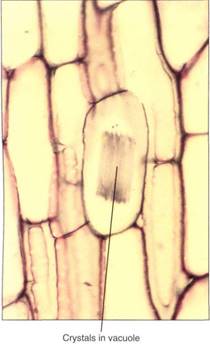


 النبات
النبات
 الحيوان
الحيوان
 الأحياء المجهرية
الأحياء المجهرية
 علم الأمراض
علم الأمراض
 التقانة الإحيائية
التقانة الإحيائية
 التقنية الحيوية المكروبية
التقنية الحيوية المكروبية
 التقنية الحياتية النانوية
التقنية الحياتية النانوية
 علم الأجنة
علم الأجنة
 الأحياء الجزيئي
الأحياء الجزيئي
 علم وظائف الأعضاء
علم وظائف الأعضاء
 الغدد
الغدد
 المضادات الحيوية
المضادات الحيوية|
Read More
Date: 31-10-2016
Date: 18-10-2016
Date: 29-10-2016
|
Diffusion, Osmosis, and Active Transport
The first thing to consider in transport is the mechanism by which material moves through a solution and crosses a membrane. The simplest method is diffusion, in which the random movement of particles in solution causes them to move from areas where they are in relatively high concentration to areas where they are in relatively low concentration. Diffusion through a membrane is technically known as osmosis.
Membranes are of three types: Freely permeable membranes allow all solutes to diffuse through them and have little biological significance. Completely impermeable membranes do not allow anything to pass through and occur as isolation barriers. Differentially or selectively permeable membranes allow only certain substances to pass through; all lipid/protein cell membranes are differentially permeable. Hydrophobic molecules diffuse easily through any cell membrane, whereas many polar, hydrophilic molecules can cross differentially permeable membranes only if the membranes have special protein channels through which the molecules can diffuse. Water molecules, even though highly polar, pass through all membranes.
Most membranes also have membrane-bound molecular pumps that use the energy of ATP to force molecules across the membrane, even if that type of molecule is extremely concentrated on the receiving side; this process is active transport. The molecular pump, which is a protein molecule, binds to both the molecule and ATP; when ATP splits into ADP and phosphate, the energy is transferred to the pump, forcing it to change shape, carry the molecule across the membrane, and release it. The membrane must otherwise be extremely impermeable to the molecule or it leaks back as rapidly as it is transported. Proton pumping in photosynthesis and respiration are examples of active transport .
All cell membranes are important in transport processes; the plasma membrane governs movement of material into and out of the cell. Substances can move across the vacuolar membrane by either osmosis or active transport; the vacuole acts as an accumulation space for sugars, pigments, crystals, and many other compounds (Fig. 1). The endoplasmic reticulum and dictyosome membranes transport material that then accumulates in vesicles. These vesicles may be relatively permanent, remaining in the cell for long periods of time, or they may be a means of intracellular transport, in which the vesicles migrate through the cytoplasm and fuse with another organelle. During fusion, the membranes merge and the vesicle contents are transferred into the organelle . This is a common means of moving material from the endoplasmic reticulum to dictyosomes or from either of these organelles to the cell exterior by fusion with the plasma membrane. During cell division, the new cell plate (the two primary walls and middle lamella) is formed by the coalescence of vesicles from both endoplasmic reticulum and dictyosomes.

FIGURE 1: These crystals are located in a cell vacuole. Calcium and oxalic acid are transported across the vacuole membrane by molecular pumps, then combine into these needle-shaped crystals (X 80).



|
|
|
|
4 أسباب تجعلك تضيف الزنجبيل إلى طعامك.. تعرف عليها
|
|
|
|
|
|
|
أكبر محطة للطاقة الكهرومائية في بريطانيا تستعد للانطلاق
|
|
|
|
|
|
|
العتبة العباسية المقدسة تبحث مع العتبة الحسينية المقدسة التنسيق المشترك لإقامة حفل تخرج طلبة الجامعات
|
|
|